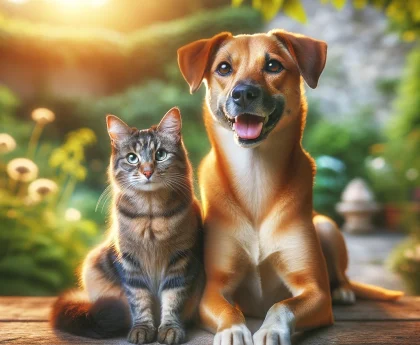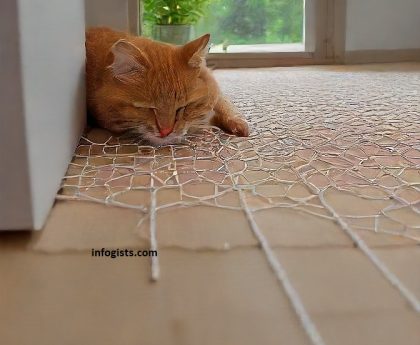Introduction
Indoor cats, while safe from outdoor hazards, often face a lack of mental and physical stimulation. Environmental enrichment is crucial for indoor cats to lead fulfilling lives, as it promotes natural behaviors, mental engagement, and overall well-being. In this article, we will delve into the concept of environmental enrichment for indoor cats and provide practical tips for creating a stimulating environment that meets their needs.
Understanding Environmental Enrichment
Environmental enrichment involves enhancing an animal’s surroundings to promote mental stimulation, physical activity, and emotional well-being. For indoor cats, enrichment activities aim to replicate aspects of the outdoor environment, providing opportunities for exploration, play, and social interaction within the confines of the home.
Benefits of Environmental Enrichment:
- Mental Stimulation: Enrichment activities engage a cat’s cognitive abilities, preventing boredom and reducing the risk of behavioral issues.
- Physical Exercise: Enrichment encourages physical activity, helping indoor cats maintain a healthy weight and muscle tone.
- Emotional Well-being: A stimulating environment reduces stress and loneliness, promoting emotional stability and contentment in indoor cats.
Creating a Stimulating Environment:
- Interactive Toys: Offer a variety of interactive toys such as feather wands, puzzle feeders, and laser pointers to engage your cat’s senses and encourage play.
- Vertical Space: Install cat trees, shelves, or window perches to provide vertical territory for climbing, jumping, and observing their surroundings.
- Scratching Posts: Provide multiple scratching posts made of different materials to satisfy your cat’s natural urge to scratch and stretch.
- Hiding Places: Create cozy hiding spots using cat beds, blankets, or cardboard boxes where your cat can retreat for privacy and relaxation.
- Outdoor Enclosures: If feasible, consider building an outdoor enclosure or “catio” to allow your cat to safely experience the outdoors while remaining protected from potential dangers.
- Sensory Stimulation: Stimulate your cat’s senses with toys that appeal to sight, sound, smell, and touch, such as crinkle balls, catnip toys, and interactive puzzle games.
References:
- Bradshaw, John. “Cat Sense: How the New Feline Science Can Make You a Better Friend to Your Pet.” Basic Books, 2013.
- Ellis, Sarah L., and Sarah Heath. “Environmental Enrichment: Practical Strategies for Improving Feline Welfare.” Journal of Feline Medicine and Surgery, vol. 13, no. 11, 2011, pp. 837–847.
- Landsberg, Gary, et al. “Handbook of Behavior Problems of the Dog and Cat.” Elsevier Health Sciences, 2012.
FAQs about Environmental Enrichment for Indoor Cats:
- Q: Why is environmental enrichment important for indoor cats?
- A: Environmental enrichment is important for indoor cats to prevent boredom, promote mental stimulation, and support their overall well-being.
- Q: How can I tell if my indoor cat is bored or understimulated?
- A: Signs of boredom or understimulation in cats may include excessive sleeping, overeating, destructive behavior, or increased vocalization.
- Q: What are some examples of enrichment activities for indoor cats?
- A: Examples of enrichment activities for indoor cats include interactive toys, vertical climbing structures, puzzle feeders, and outdoor enclosures.
- Q: How can I encourage my indoor cat to exercise more?
- A: Encourage your indoor cat to exercise by providing interactive toys, vertical space for climbing and jumping, and regular play sessions.
- Q: Are there specific toys that are best for indoor cats?
- A: Toys that encourage natural behaviors such as hunting, chasing, and pouncing are ideal for indoor cats. Examples include feather wands, laser pointers, and puzzle feeders.
- Q: Can I use food puzzles as part of my cat’s enrichment routine?
- A: Yes, food puzzles are an excellent way to provide mental stimulation and encourage natural foraging behaviors in indoor cats.
- Q: How can I create hiding spots for my indoor cat?
- A: You can create hiding spots using cat beds, blankets, cardboard boxes, or specially designed cat caves placed in quiet, secluded areas of your home.
- Q: Are there any risks associated with outdoor enclosures for indoor cats?
- A: Outdoor enclosures, or “catios,” should be securely enclosed to prevent escapes and protect cats from potential dangers such as predators, traffic, or toxic plants.
- Q: Can I build vertical climbing structures for my indoor cat?
- A: Yes, you can build vertical climbing structures using cat trees, shelves, or wall-mounted perches to provide opportunities for climbing and exploration.
- Q: How often should I rotate my indoor cat’s toys and enrichment activities?
- A: It’s a good idea to rotate your cat’s toys and enrichment activities regularly to keep them engaged and prevent boredom. Aim to introduce new toys or activities every few weeks.





